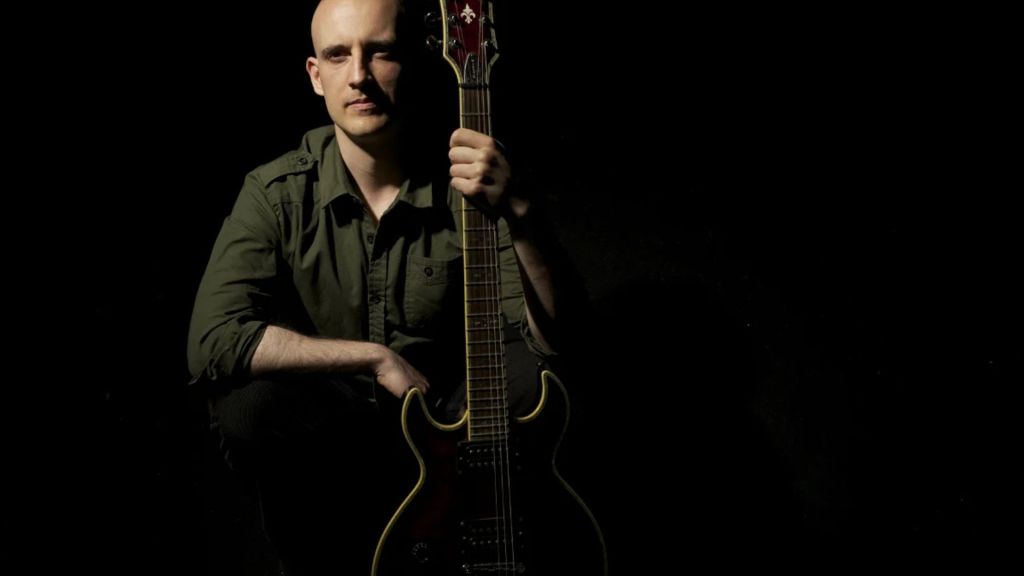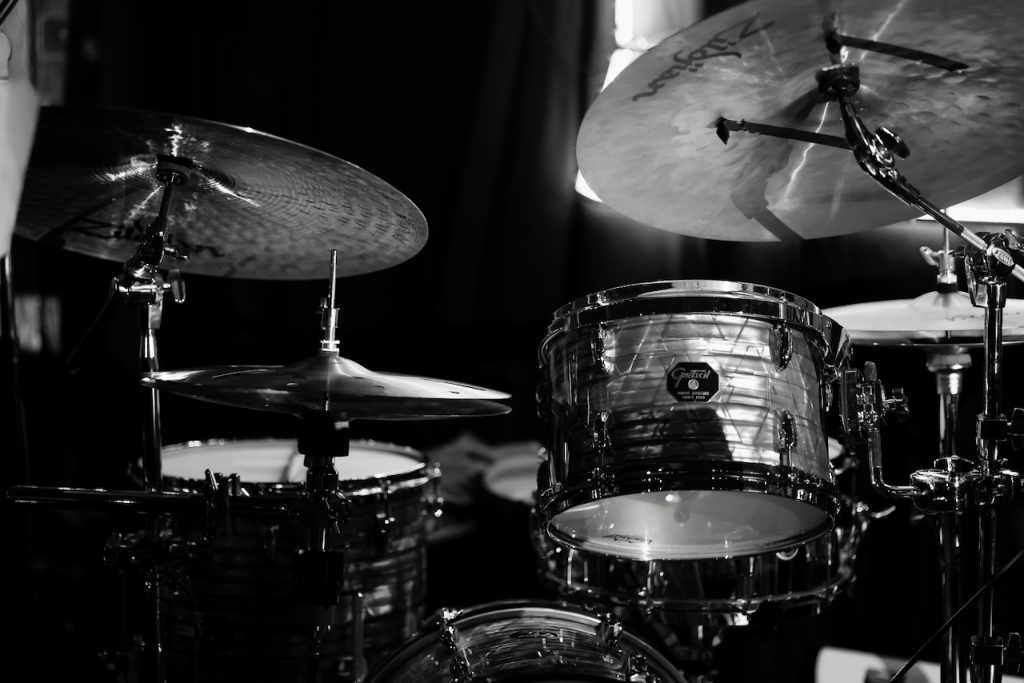
If you’re a guitar player, you likely know the majority of the tried and true, campfire-ready chord shapes based off of the CAGED system but perhaps things get a bit scary once you start venturing past the third fret. Maybe you you’re unsure of how chords work in general or maybe you’re just looking for a new way to spice up your playing.
For these reasons and more, I’m going share a handful of what I consider to be essential chord shapes that I believe every guitar player will benefit from.
Triads
Arguably the most popular chord types found in contemporary music, triads are found in genres ranging from Soul, Funk, Country, Folk to Rock, Pop, and everything in between.
So what is a triad anyway?
The short answer is that a triad is a three note chord. That’s it. While triads can take many different forms (including those standard campfire chords I was talking about earlier) I will be focusing on two specific shapes that span across three
strings on the guitar. Because of this usage of three notes, the tonality of each cord can vary depending on its construction so this requires a bit more explanation.
In the context of traditional diatonic harmony of major scales, there are three types of triads found within. Each with different corresponding moods.
Major (Happy)
Minor (Sad, melancholy)
Diminished (Tense, Scary)
For the purposes of today’s article, I’m going to be talking about major and minor triads only. I’m also going to show how to play both by using the same chord shape.
Here’s an example of an A major triad.

Root note: A Major third: C# Perfect fifth: E
Here’s an example of D minor triad.

Root note: D Minor third: F Perfect fifth: A
Notice how they both share a similar shape? Both require your index, middle and ring fingers respectively on the same frets in the same order. The only difference in this case is that the A major triad begins on the “D” string and the D minor Triad begins one string down (the “G” string.)
How to build a major triad
A simple way to think about how triads are made is to start by spelling out a Major scale. For example, let’s build an A major triad by first spelling out an A major scale.
(1) A – (2) B – (3) C# – (4) D – (5) E – (6) F# – (7) – G#
The way that this chord is created is by harmonizing the scale in degrees of thirds. What this means is we take the root note of “A” and count up three notes in the scale (including the root) to build our chord.
(1) A – (2) B – (3) C# – (4) D – (5) E – (6) F# – (7) – G#
As you can see, by starting from the root note of A, (1) you are required to skip B
(2) to find the third C#
From there, you start from C#, skip D to find E (the fifth)
And there you have it! You’ve got yourself an A major triad consisting of the notes A, C#, and E.
This note skipping formula is applied in the same way to find minor and diminished triads naturally occurring in a major key.
If we keep things in the key of A and apply this to finding a B minor triad for instance, it would look like this.
(1) A – (2) B – (3) C# – (4) D – (5) E – (6) F# – (7) – G#
As you can see, the “B” in this A major scale becomes the root note of this new chord and the skipping process is applied once more. Jumping over C# to find D and then jumping from D to find F#.
Make sense?
Let’s start over and find a D minor triad by first spelling a D minor scale
(1) D – (2) E – (3) F – (4) G – (5) A – (6) Bb – (7) – C
The way that this triad is created is by harmonizing the scale in thirds once again so the note skipping game continues.
(1) D – (2) E – (3) F – (4) G – (5) A – (6) Bb – (7) – C
As you can see, by starting from the root note of D, you are required to skip E to find the third (F)
From there, you start from the third (F), skip G to find A (the fifth)
Boom! You now have a D minor triad.
Make sense?
Dyads
If triads are chords made up of three notes, then Dyads are made up of, you guessed it, just two notes. Namely, the root and fifth if we’re talking about the ever popular “power chords” that get so much attention in the Rock, Pop and Metal world but let’s take a step outside the common and delve into the richness
that alternative Dyads offer. Incorporating these shapes into your playing with immediately open up the doors to more sophisticated sounds without cluttering up the fretboard.
Major Third Dyads

Major third dyads typically have a very pleasant sound to them when you’re playing them without any real context. Sit back and strum the example shown above and you’ll notice a very calm, kind of happy feeling associated. I was pleasantly surprised however at just how evil you can make your guitar riffs sound when utilizing these bad boys in a chromatic fashion. Mwahahahaha.
The main riff in “Bloodline” from Slayer is a great example of this.

Finding the major third anywhere on the fretboard is super simple. If your index finger is on the root note (let’s say the 5th fret on the low “E” string) all you need to do is go down one string towards the floor and then slide your finger back one fret to find the major third. (In this case, it would be found at the 4th fret of the “A” string.) In other words, down one string, back one fret. Make sense?
Minor Third Dyads

Alright, so we’ve covered major thirds. Let us clutch the orb as we explore the might and splendor that resides inside the illustrious minor third dyads. Notice how both this and the major third dyad are similar in shape with the exception of the minor third being an extra half step behind the root note. In other words, start from the root, go down one string, then back two frets. When used exclusively in a riff, the minor third can create a devastating atonal flavor to what would otherwise be standard power chords. A great example of this would be during the chorus of “This Love” by Pantera. When combining major and minor third dyads together, music can take on a more dramatic and even classical nature as depicted in songs like “Orion” and the distorted intro riff in “Battery” by Metallica.
Seventh Chords
I’m a big fan of using seventh chords especially when in a context that lives outside of what would be considered an obvious context. Opeth are a huge influence in this regard as I remember learning their material and picking up a number of simple to form chord shapes that added a degree of complexity that standard power chords couldn’t muster. Here’s a go to voicing I always seem to reach for particularly on the guitar’s lower strings.

Here’s how the chord is constructed.
1 – G#
3 – B# (also known as “C”)
7 – F## (also known as “G”)
Notice how this shape omits the 5th altogether thus creating what is known as a “shell voicing.”
I personally like blending this chord with a G add11 (no 5th) to create a very peaceful yet somehow simultaneously ominous feeling.

Suspended 2nd Chords
If you’re unfamiliar with the wide finger stretches of the majestic Sus 2 (short for suspended 2nd) chords, you owe it to yourself to board the pain train and level up your digits. Those who brave the ambitious five fret expanse will be rewarded with a lush, open sound that instantly creates a feeling of intense emotion and space, albeit in a very gentle way. Words like “incandescent”, “luminous” and other worldly come to mind as I play these chords.
Similar to a triad, the suspended 2nd chord instead omits the 3rd in a typical major triad and replaces it with the 2nd degree of its scale. Here are the differences between the two to give you an idea.
Notes found in a Major triad in C = 1 – 3 – 5 ( C – E – G)
Notes found in a suspended 2nd chord = 1 – 2 – 5 ( C – D – G)
We’re not done yet however. In order to achieve the huge open sound of this particular voicing, we need to rearrange the order of these particular notes by swapping the 2 with the 5.
The end result looks like this.
Suspended 2nd chord = 1 – 5 – 2 ( C – G – D)

Though these chords are incredibly versatile, I for one like the sound of a sus2 chord replacing either the 3 or 4 chord in a given progression depending on what’s going on.
Here’s an example of a 4 – 1 – 5 – 3 using all sus2 chords.

In closing
That’s all I’ve got for you today. If you haven’t delved into these shapes, I can recommend them enough. These have served me well and I look forward to seeing how you implement them into your own music. If you have any questions or would like some guidance on where to go next, be sure to drop me a line here at the following link.
https://pivodio.com/profiles/@AaronCloutier
Thanks for reading!



Leave a comment